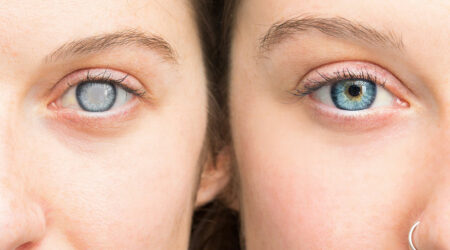
Signs, symptoms, and causes of atopic dermatitis
Atopic dermatitis, also called eczema, is a severe condition that leads to inflamed, itchy, and dry skin. This is a common skin illness that occurs in young children. However, it can occur at any age. This condition affects 9.6 million children and over 16 million adults. The condition is chronic, long-lasting, and has many triggers, which can lead to flare-ups on the skin. Below are the causes, symptoms, and also risk factors of this illness.
Causes
There are two major reasons for the onset of this skin disease. One of the causes for the disease to develop includes a gene variation that affects the skin’s ability to provide protection. When the skin is unable to protect itself from foreign objects like bacteria, irritants, allergens, and environmental factors like pollution and smoke, one is at a higher risk of developing this skin condition.
Another factor that contributes to the development of this condition is the presence of bacteria called staphylococcus aureus. This excess bacteria replaces the good bacteria from the skin and disrupts the healthy functions of the skin’s barrier. The compromised skin barrier is responsible for triggering an immune system reaction which leads to the triggering of symptoms.
Signs and symptoms
Atopic dermatitis or eczema can develop on any part of the skin on the body, and the symptoms vary significantly from one person to another. However, there are some common signs and symptoms that should not be ignored. These include:
- Dry, cracked skin is common and often leads to itchy skin. This itchiness is referred to as pruritus.
- Some people also experience a rash on the skin. There is often swelling on the skin, and the color of the rash varies from person to person, depending on their skin color. These rashes can also ooze fluid and bleed when scratched, which makes the skin susceptible to infections.
- Some people may experience symptoms like small, raised bumps that appear on the skin. These bumps could also cause crusting and oozing of pus from the affected area.
- In some cases, the skin may also thicken over time, losing its hydration and moisture.
- For some people, the skin around their eyes can get darker over time.
- Some affected persons also experience poor sleep quality due to itchy and irritated skin.
Apart from these symptoms, other signs include frequent skin infections, pus, and yellow scabs on the skin. If one notices these symptoms over a few weeks, it is important to consult a doctor at the earliest for timely diagnosis and treatment. While some symptoms, like dry or itchy skin, may seem common or temporary, it is essential to get some recommended self-care tips or prescription treatment from experts.
Atopic dermatitis is one of the types of dermatitis, and others include contact dermatitis, diaper dermatitis, nummular dermatitis, Stasis dermatitis, perioral/periorificial dermatitis, seborrheic dermatitis (dandruff, cradle cap), dyshidrotic dermatitis. And the symptoms can vary and range in severity from one type to another. Ichinnes and redness are the most common symptoms of the different types of dermatitis.
Risk factors and complications
There can be some complications and risk factors that arise due to the disease. These include developing asthma and hay fever, food allergies, chronic itchy and scaly skin, patches of skin that is darker than the rest of the surrounding area, skin infections, irritant hand dermatitis, allergic contact dermatitis, sleep problems, and mental health conditions. Doctors associate this condition with anxiety and depression as the condition may severely affect their social and day-to-day life. Constant itching and being unable to get proper sleep through the night is a precursor to emotional and mental well-being in individuals.




